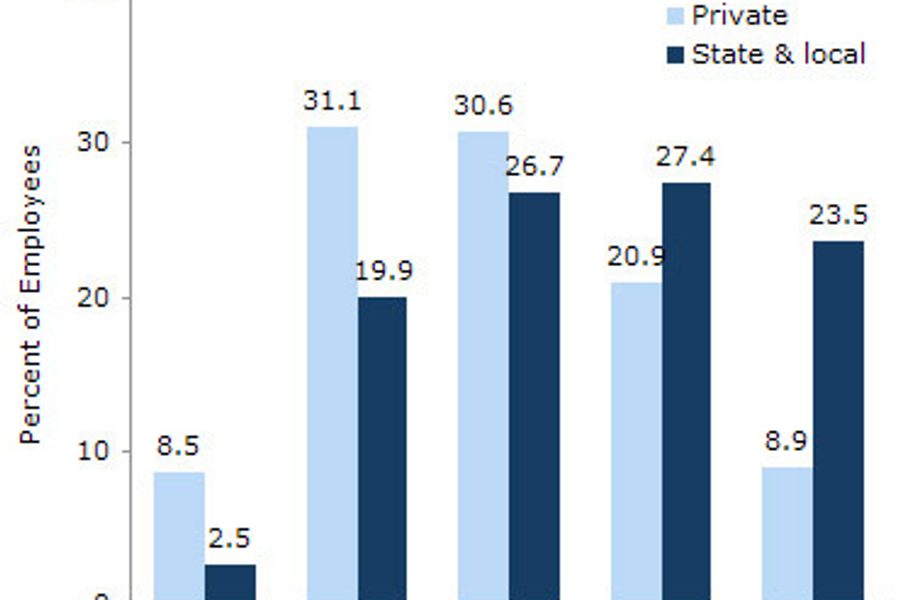
“Public-sector unions bankrupting America,” screamed the headline of an editorial in a recent issue of the right – wing Washington Times. But even more centrist or liberal opinion-makers, like New York Times economics writer David Leonhardt, list reducing public worker pensions as a necessary step toward sound publc policy.
Having weakened or destroyed unions in the private sector, the economic, political and ideological elite, with few exceptions, are increasingly attacking the public-sector unions and public employees. Their pensions are too generous, attackers say, pointing to the occasional retired government employee with multiple pensions or pensions boosted by late-career pay spikes. And their pay is too high, they say, noting that average pay is around 13-percent higher for all public workers than for all private workers.
With many states facing budget shortfalls as a result of the recession and housing bubble implosion, it’s easy and tempting to attack workers. But two new studies – confirming conclusions of most previous research — show that public workers are actually underpaid compared to workers in the private sector.
It’s critical to recognize that state and local government workers are more highly educated and older on average than private industry workers (and disproportionately female also), as Center for Economic and Policy Research economist John Schmitt reports in a new study. (Just over half of state and local workers had college degrees or more last year, compared to 30 percent of the private average.)
Compared to workers of similar age and education, Schmitt says that state and local workers make 4 percent less than private workers. While lower-skilled public workers make more than their counterparts, a typical high-wage, highly-educated government worker — a group hugely inflated by teachers from pre-school to graduate school — makes about 11 percent less than comparable private workers.
Schmitt estimates that higher public employee benefits at most may bring pubic and private workers equal in total compensation, but then other issues must be considered. Government pay standards may most appropriately be compared with better-paying large corporations and with more highly educated workers. Also larger pensions compensate for the exclusion of about 30 percent of state and local government workers from Social Security.
Research released in April found even larger disadvantages for public workers’ pay and benefits. University of Wisconsin-Milwaukee economists Keith Bender and John Heywood, in a study prepared for the Center for State & Local Government Excellence and the National Institute on Retirement Security, also adjusted private/public wage comparisons to workers with comparable educations. But they also looked at total compensation, including pensions and other benefits.
Bender and Heywood found state employees on average earned 11 percent less than comparable private workers, and local government workers earn 12 percent less. Add in those targeted pensions and other benefits, which do account for a higher percentage of public compensation, and the earnings disadvantage slips only slightly: Total compensation is 6.8 percent less for state workers, 7.4 per cent lower for local government workers, compared to the private sector.
“The average compensation of state and local employees is not excessive,” they conclude. Driving down public worker pay is not justified in terms of equity or the revival of the economy, which would be hurt by cuts in public jobs or pay. But the assault on public workers and their unions is mostly ideological, and facts — as well as people — are left unemployed.
David Moberg, a former senior editor of In These Times, was on staff with the magazine from when it began publishing in 1976 until his passing in July 2022. Before joining In These Times, he completed his work for a Ph.D. in anthropology at the University of Chicago and worked for Newsweek. He received fellowships from the John D. and Catherine T. MacArthur Foundation and the Nation Institute for research on the new global economy.








